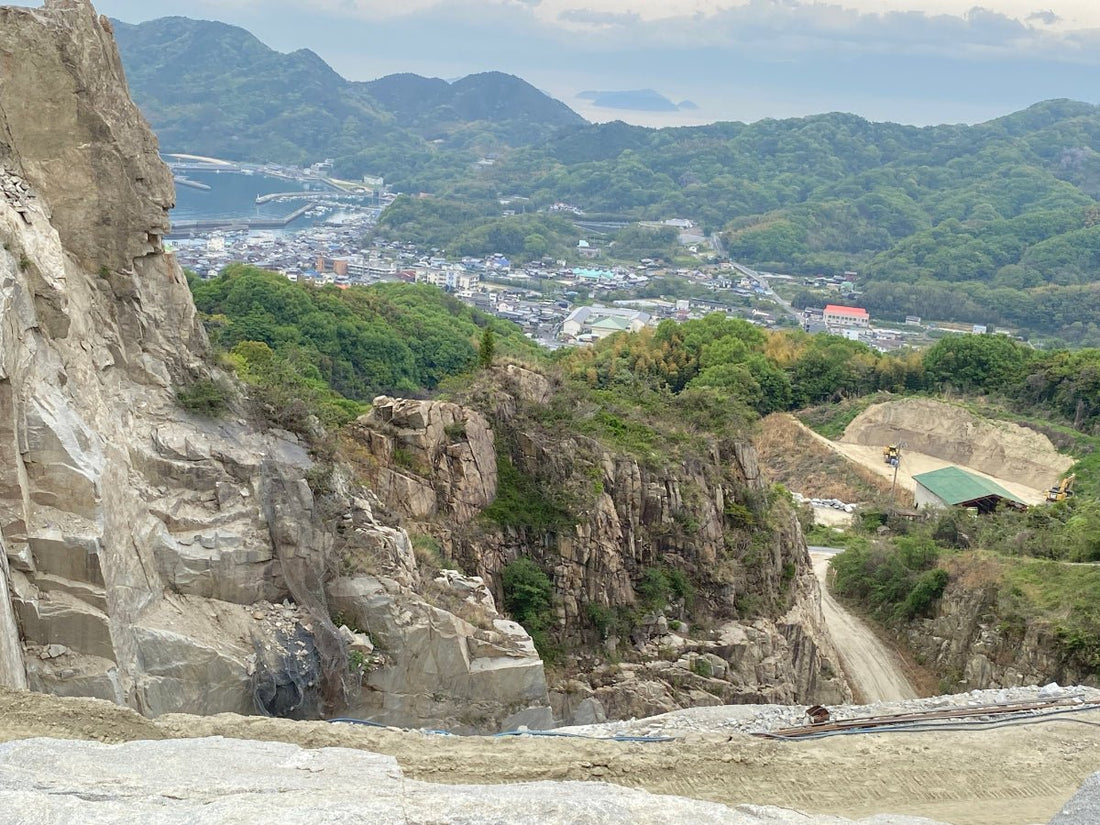
Quarry visit report 2025 No.2 Ohshima Island
Share
Visiting the Quarry of Oshima Stone — Shikoku’s Prestigious Granite

Oshima Stone is one of Japan’s most celebrated granites, quarried on Oshima Island in Imabari City, Ehime Prefecture. This article covers its geological age, quarrying history, and architectural uses, along with my personal visit in April 2025.


About Oshima
Oshima is a small island in the Seto Inland Sea, measuring around 30 km². Despite its size, it is widely recognized as the source of Oshima Stone. Known for its bluish-gray color and fine-grained texture, this granite is both durable and workable, making it ideal for:
- Premium gravestones
- Architectural materials
- Stone statues
- Japanese garden ornaments

Geological Age of Oshima Stone
Oshima Stone was formed during the Late Cretaceous period (80–100 million years ago). At this time, deep magma cooled slowly underground, creating the granite of western Japan’s Setouchi Granite Belt.
It was formed in the same geological age as Kitagi Stone, making the two “sibling stones” of the Seto Inland Sea. Their refined appearance and weather resistance allow them to endure for tens of millions of years.
History of Quarrying
Quarrying on Oshima dates back to the Edo period, when the Seto Inland Sea’s shipping routes enabled wide distribution of heavy stone. By the Meiji and Showa eras, large-scale quarrying employed hundreds of stonemasons, and the island was known nationwide as a “Stone Island.”
Today, several quarries remain active, and the Oshima Stone name continues to represent top-quality granite across Japan.
My Visit in April 2025

I visited Oshima in April 2025. The most striking sight was the towering quarry cliffs cut into the mountainside. These vertical walls still bear the tool marks of past stonemasons, who worked with chisels and hammers to cut blocks that would travel throughout Japan. Standing before them, I felt the historical weight embedded in the stone itself.
Architecture Built with Oshima Stone
Although best known for gravestones, Oshima Stone has also been used in many important architectural projects:
- Imabari Castle (Ehime, 1604) — strong stone walls built with Oshima granite.
- Akasaka Palace (Tokyo) — Meiji-era guesthouse that incorporated Oshima Stone.
- Shinsaibashi Bridge (Osaka) — an iconic city landmark built with Oshima Stone.
- Shijo and Shichijo Bridges (Kyoto) — Kamo River bridges supported by Oshima granite.
- Izumo Taisha Grand Shrine (Shimane) — restoration works harmonizing sacred tradition with Oshima Stone.
- Osaka Expo 2025 (Stone necklace) Link

Conclusion
Oshima Stone is not just a building material but a cultural resource that has shaped Japan’s architecture and heritage. Alongside Kitagi Stone and Aji Stone, it remains one of Japan’s three most prestigious granites.
In the future, I plan to visit the Aji Stone quarries as well, completing the journey of Japan’s three legendary granites and deepening the story of Japanese stone culture.


I took this photo when I went to Oshima.
For Men Oshima Stone Buddhist Prayer Beads Juzu Japanese Mala Beads 10mm Kyoto
